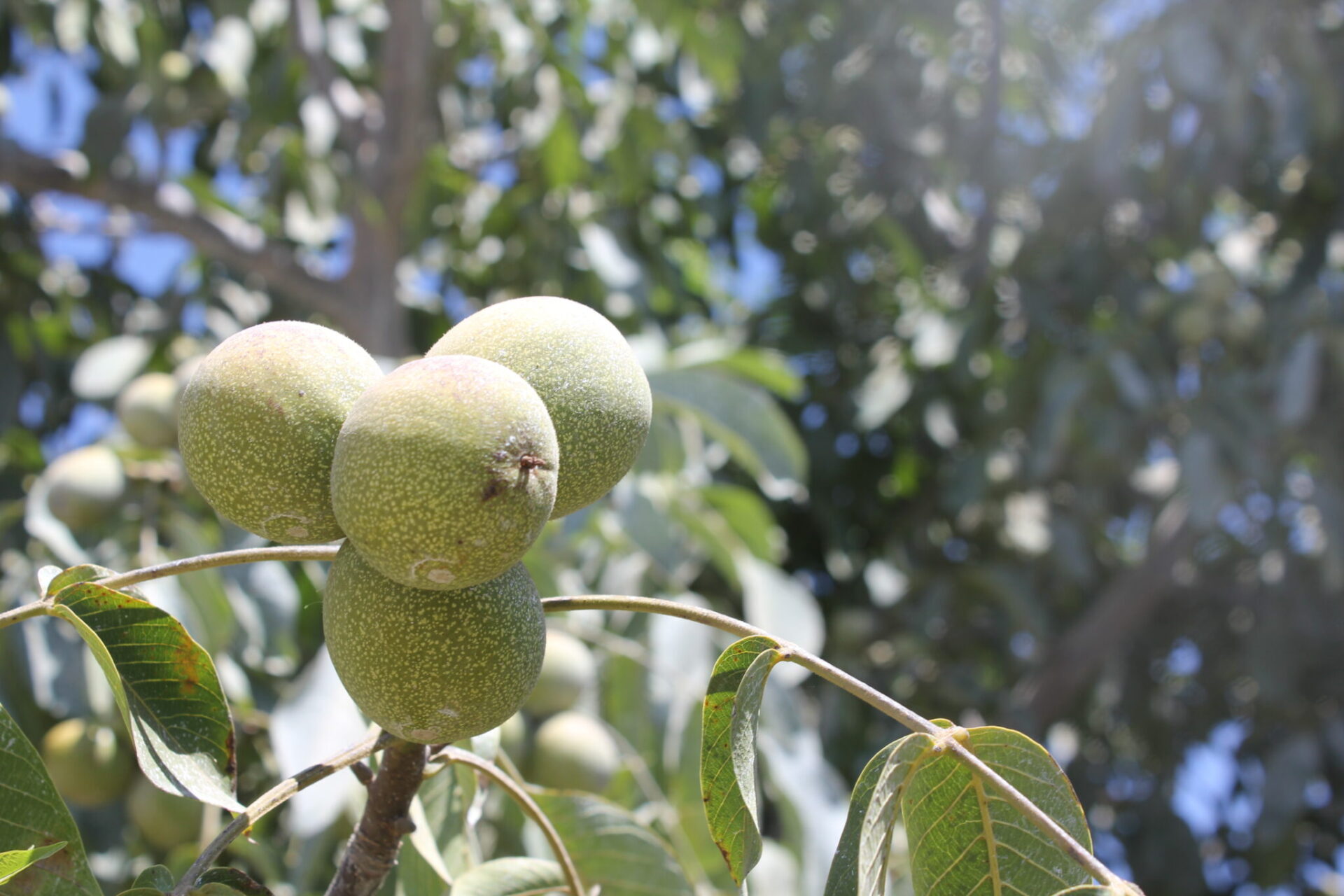
Shaking off a quality crop is a walnut grower’s goal every year. When returns are projected to be lower, quality becomes even more critical.
Kernel color, insect damage, shrivel and mold all affect the price a grower receives for his crop. The two key components of walnut quality are kernel size and color.
Tulare County UCCE Advisor Elizabeth Fichtner said water management throughout the season is essential not only for good yields, but for producing quality, light colored kernels which will bring a higher price.
Excessive tree stress (over or under irrigation) has a direct impact on kernel color, Fichtner said. UC research trials have shown that starting irrigation when trees reach mid day stem water potential about 2 bars below the fully watered baseline is best for tree health and ensuring higher edible kernel weights.
Excess or lack of water later in the season along with shaded conditions in the inner canopy of the tree can lead to carbohydrate deprivation and result in darkening of the kernel pellicle. Trials have shown that the impact carbohydrate deprivation has on nut quality varies over the growing season.
Eric Heidman, vice president of grower services at Diamond Foods, said the best way to maximize crop return while capturing the best value in the marketplace is to produce the highest edible yield and the lightest colored crop as possible from the varieties being grown.
“In lean price years, it’s an absolute necessity to not take shortcuts with the inputs, or negative economic effects can quickly compound,” he said.
Timely harvest is a critical component of walnut quality.
“It’s a balancing act as harvesting too early will prompt longer drying times which produces darker kernels at delivery,” Heidman said. “Harvesting too late exposes a grower to navel orangeworm damage and naturally darkened kernels.”
Sacramento Valley Orchard Source notes that most loss of quality happens during the first nine hours after shaking. Drying nuts quickly after pickup helps reduce kernel mold.
Insect infestations, disease and sunburn can also impact walnut quality. Fichtner said early monitoring for codling moth alerts growers to infestation levels in the orchard. Codling moth feeding not only damages kernels, but also provides an entry point for navel orangeworm.
Mite feeding can cause defoliation which reduces nut yields and quality. Defoliation due to aphid feeding increases likelihood of sunburn which darkens or shrivels kernels. Scale insect feeding kills fruitwood and opens up Botryosphaeria infections that kill the next year’s buds.
Infestation of walnut husk fly in late July to mid August can also lead to shriveled or darkened kernels and may induce mold growth. Later infestations cause shell staining.











